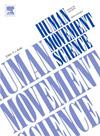Effects of motor imagery and action observation on pelvic floor and related structures in healthy women: A randomized controlled trial
IF 1.9
3区 心理学
Q4 NEUROSCIENCES
引用次数: 0
Abstract
The main aim was to assess the effects of motor imagery (MI) and action observation (AO) plus physical exercise (PE) on pelvic floor and related structures. Forty-four healthy women were randomized into three groups: MI, AO, or sham observation (SO) group. The outcome measures included the pelvic floor muscles (PFM) condition (including basal tone and strength), lumbo-pelvic motor control, and pain sensitivity. All women performed six sessions at the rate of 3 s/week (for 2 weeks). An initial assessment was carried out (T0), another one 1-week after starting the study (T1), and a third one at the end (T2). Results showed significant PFM strength gains in MI and AO groups, but not in the SO group. Regarding lumbo-pelvic motor control, both MI and AO groups obtained statistically significant changes between pre- and post-intervention Additionally, only the AO group showed significant improvements already at 1-week of intervention. Finally, all groups showed improved pain sensitivity in the likely area of referred menstrual pain post-intervention, with only the MI group showing changes 1 week after starting the intervention. In conclusion, results showed that adding MI and AO to PE program leads to an improvement of sensorimotor function of PFM and related structures in general. Despite finding no statistically significant inter-group differences, some findings such as strength gains or the lumbo-pelvic motor control improvements were only found in MI and AO groups, and this should be considered clinically.
运动想象和动作观察对健康女性盆底及相关结构的影响:一项随机对照试验
主要目的是评估运动想象(MI)和动作观察(AO)加体育锻炼(PE)对盆底及相关结构的影响。44名健康女性随机分为三组:MI组、AO组和假观察组(SO)。结果测量包括盆底肌肉(PFM)状况(包括基底张力和强度)、腰盆腔运动控制和疼痛敏感性。所有妇女以每周3秒的速度进行6次治疗(持续2周)。初步评估(T0),研究开始后1周再进行一次评估(T1),研究结束时进行第三次评估(T2)。结果显示心肌梗死组和AO组PFM强度显著增加,而SO组无明显增加。在腰盆腔运动控制方面,MI组和AO组在干预前和干预后均有统计学意义的变化。此外,只有AO组在干预1周时已经有了显著的改善。最后,所有组在干预后可能涉及的月经疼痛区域的疼痛敏感性都有所改善,只有MI组在干预开始1周后出现变化。综上所述,在PE方案中加入MI和AO可改善PFM及相关结构的感觉运动功能。尽管没有发现组间差异有统计学意义,但一些发现如力量增加或腰盆腔运动控制改善仅在MI组和AO组中发现,这应在临床上予以考虑。
本文章由计算机程序翻译,如有差异,请以英文原文为准。
求助全文
约1分钟内获得全文
求助全文
来源期刊

Human Movement Science
医学-神经科学
CiteScore
3.80
自引率
4.80%
发文量
89
审稿时长
42 days
期刊介绍:
Human Movement Science provides a medium for publishing disciplinary and multidisciplinary studies on human movement. It brings together psychological, biomechanical and neurophysiological research on the control, organization and learning of human movement, including the perceptual support of movement. The overarching goal of the journal is to publish articles that help advance theoretical understanding of the control and organization of human movement, as well as changes therein as a function of development, learning and rehabilitation. The nature of the research reported may vary from fundamental theoretical or empirical studies to more applied studies in the fields of, for example, sport, dance and rehabilitation with the proviso that all studies have a distinct theoretical bearing. Also, reviews and meta-studies advancing the understanding of human movement are welcome.
These aims and scope imply that purely descriptive studies are not acceptable, while methodological articles are only acceptable if the methodology in question opens up new vistas in understanding the control and organization of human movement. The same holds for articles on exercise physiology, which in general are not supported, unless they speak to the control and organization of human movement. In general, it is required that the theoretical message of articles published in Human Movement Science is, to a certain extent, innovative and not dismissible as just "more of the same."
 求助内容:
求助内容: 应助结果提醒方式:
应助结果提醒方式:


